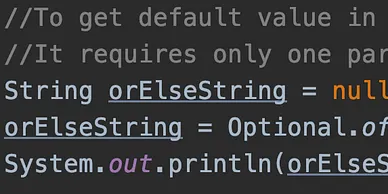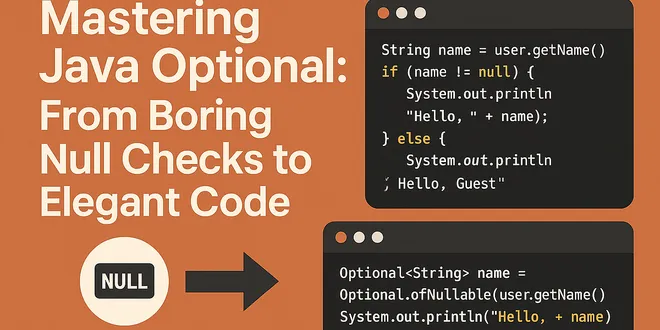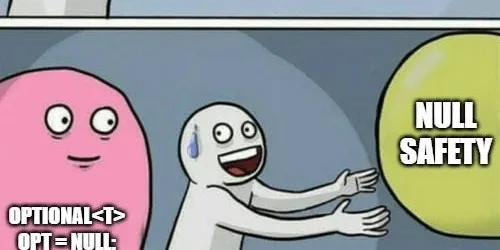Optional Class
The Optional class in Java 8 is a powerful feature designed to address the common issue of null references, which can lead to NullPointerExceptions. It serves as a container that may or may not hold a non-null value, promoting safer and more readable code. By using Optional, developers are encouraged to explicitly handle the absence of values, reducing the likelihood of runtime errors. This class provides various methods, such as isPresent(), get(), and orElse(), to facilitate value retrieval and default handling. Overall, the Optional class enhances code clarity and maintainability by minimizing the need for null checks.

Optional Class in Java 8: Making Your Code More Clear and Concise .
The Optional class in Java 8 is a container object which is used to contain a value that might or might not be present. It was introduced as a way to help reduce the number of NullPointerExceptions th...
📚 Read more at Javarevisited🔎 Find similar documents

Optional
Versions [{“Name”:“Java SE 8”,“GroupName”:null},{“Name”:“Java SE 9 (Early Access)”,“GroupName”:null}] Introduction Optional is a container object which may or may not contain a non-null value. If a va...
📚 Read more at Essential Java🔎 Find similar documents

Why Bother With Optional?
Use Optional for No More Surprise everyone know findUser might not find anything. No more surprise! The Golden Rules of Optional 🏆 1. Return Types Only, Please! 🚫 Use Optional only for method return...
📚 Read more at Javarevisited🔎 Find similar documents

Using Optionals
Supporting Methods That Cannot Produce a Result We already covered several uses of the Optional class, especially in the case where you are calling a terminal operation on a stream that does not have...
📚 Read more at Learn Java🔎 Find similar documents

Null Check vs Optional? Are they same
When this question was asked in an interview, like everyone I answered “Java 8 has introduced this new class Optional in java.util package. By using Optional, we are avoiding null checks and can speci...
📚 Read more at Javarevisited🔎 Find similar documents

Difference between Java 8 Optional class orElse and orElseGet methods.
Hello Readers,Java 8 introduces a number of new features like Lambda expressions, Method references, Functional interfaces, Stream API, Default methods, etc to make a developer's life easy. One of the...
📚 Read more at Javarevisited🔎 Find similar documents

Java 8 — Optional — Why and When to Use them?
In Java programming, null values can be a source of frustration and errors. So to address this issue, Java 8 introduced the Optional class, a container object that can either contain a non-null value ...
📚 Read more at Javarevisited🔎 Find similar documents

An argument for using Optional as input parameters
This article may be the hardest I wrote so far here. Not because it is really technical nor because it required a lot of research prior, but because it is controversial and I had to be sure that the a...
📚 Read more at Level Up Coding🔎 Find similar documents

Simplest Possible Class
class TrivialClass {} A class consists at a minimum of the class keyword, a name, and a body, which might be empty. You instantiate a class with the new operator. TrivialClass tc = new TrivialClass();...
📚 Read more at Essential Java🔎 Find similar documents

Mastering Java Optional: From Boring Null Checks to Elegant Code
Java Optional Imagine you’re writing code, and you keep tripping over null checks. It’s like walking through a minefield — every step feels risky, and one wrong move could crash your program. Java’s O...
📚 Read more at Javarevisited🔎 Find similar documents

Optional.stream()
This week, I learned about a nifty “new” feature of Optional that I want to share in this post. It's available since Java 9, so its novelty is relative. Nowadays, it’s probably more adequate to use…
📚 Read more at Level Up Coding🔎 Find similar documents

Java Optional Is Not So Obvious
Optional can save you from NullPointerException, but it can also bring overcomplexity in your code.
📚 Read more at Level Up Coding🔎 Find similar documents

